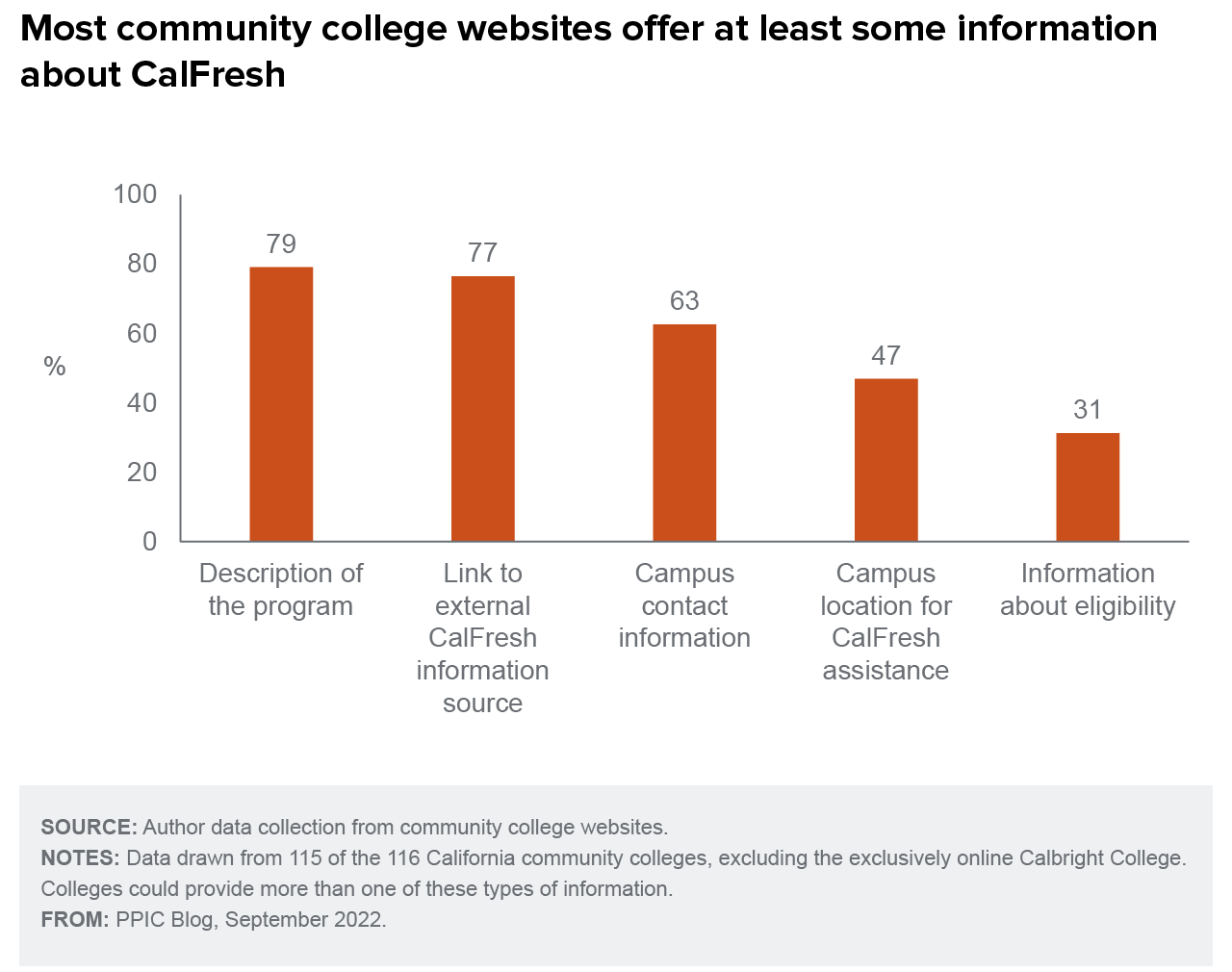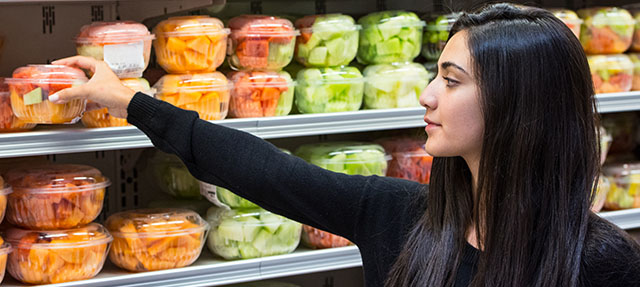As the school year begins, low-income college students are struggling to balance success in the classroom with meeting basic needs—including stable access to adequate amounts of food. While temporary measures have made CalFresh food assistance—known nationally as the Supplemental Nutrition Assistance Program (SNAP)—easier for students to access during the COVID-19 crisis, federal guidelines create enrollment hurdles for students and complexity for the state and its higher education system. In addition to demonstrating their income eligibility, college students must typically also receive certain kinds of financial aid or participate in specific types of employment to qualify for the program. California’s community colleges, which serve large shares of low-income students, are working to reduce some of these hurdles through basic needs centers.
Basic needs centers are intended to be points of contact for students across California’s higher education systems—the University of California (UC), the California State University (CSU), and the California Community Colleges (CCC)—for services such as food pantries, housing assistance, and access to safety net programs like CalFresh. Even though the CCCs enroll a higher proportion of low-income students than UCs and CSUs, funding for and implementation of these centers on community college campuses have lagged.
Assembly Bill 132 (passed in 2021) addresses this gap by allocating $100 million to establish new basic needs centers and support existing centers across the community college system. The bill sets a goal of establishing centers on all community college campuses by July 1, 2022, but at a minimum requires campuses to post information online about how to access basic needs services. CalFresh is one of the programs targeted by the legislation, as pre-pandemic data indicate that only 17% to 32% of eligible college students are enrolled in the program. Community colleges can use AB 132 funding—along with ongoing funding in the 2022–23 budget—to reach out to students through college communication channels, create outreach materials, host events, provide application assistance, and hire staff.
To get a sense of the progress colleges have made in posting information about CalFresh, we looked at CCC websites in August 2022. We found that 79% indicated the college offered CalFresh services, 77% linked to an external information source, and 62% provided contact information for on-campus application assistance. Only about half specified a campus location offering CalFresh services, and a third included eligibility information. About 4 in 5 (81%) provided multiple types of information on their websites about CalFresh, while only 9% provided no online information.

The state and its higher education systems have committed to developing on-campus resources to fight student hunger. As part of their effort to eliminate food insecurity and improve college affordability, basic needs centers need robust systems to help low-income students access the nation’s primary food assistance program. Given complex and shifting state and federal policies around student eligibility, these centers play a vital role in helping students get much-needed support.






